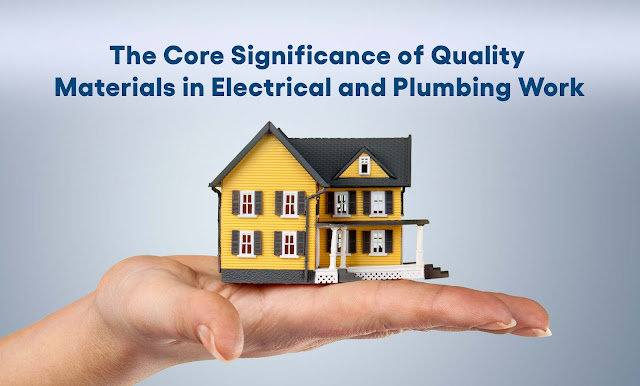The Core Significance of Quality Materials in Electrical and Plumbing Work
Overview of Plumbing and Electrical Work
You know, plumbing and electrical work might just be the unsung heroes
of our homes and buildings. They're like the veins and nerves of a building—out
of sight, but oh-so-critical. A leaky pipe or a faulty wiring may seem minor at
first, but they can eventually cause significant damage and even danger to your
property. But hey, don't sweat it—that's where quality materials and proper
installations come in.
What Quality Materials Are
and Why They Matter
Okay, so what do we mean by quality materials? It's not just about fancy
brand names or huge advertisements. In the context of plumbing and electrical
work, quality materials are those that are durable, reliable, and compliant
with industry standards. We're talking about stuff like top-notch BALCO
electrical conduits and superior water pipes. They've got the right mojo to
handle pressure, , and even temperature fluctuations
Risks of Substandard
Materials
When it comes to using subpar materials—boy, it's a minefield. You could
be looking at frequent repairs, reduced lifespans of your installations, safety
hazards, and a performance that's about as impressive as a wet match in a dark
cave.
II. The Importance of Quality
in Materials
A. Longevity of Installations
Consider quality materials as the 'Superman' of your
installations—they're built to last. They can withstand more wear and tear
compared to their lesser-quality counterparts, making them a safer bet in the
long run.
B. Safety Measures
I bet running into a bear in the woods is safer than using shoddy
materials in your plumbing and electrical work. Quality materials offer better
protection against accidents such as leaks, pipe bursts, fires, or electrical
shocks.
C. Performance and Efficiency
Top-drawer materials bring their A-game when it comes to performance.
They ensure proper water flow and consistent electrical supply, meaning you'll
experience fewer interruptions or hiccups.
III. Financial Implications of
Quality Materials in Plumbing and Electrical Work
A. Initial Capital Investment
and Benefits
In terms of spending, consider quality materials as a long-term
investment. Sure, they might take a bigger bite out of your budget initially,
but they'll save your bacon from constant repairs and replacements down the
line.
B. Cost of Maintenance and
Repairs
No one enjoys throwing money down the drain on frequent repairs, do
they? Quality materials help to keep your maintenance and repair costs under
control.
C. The Long Game with Quality
Materials
The bottom line? Quality materials come with a higher price, but they
can pour money back into your pocket in the long-term.
IV. Quality Assurance and Its
Role in Procuring Quality Materials
A. Understanding Quality
Assurance (QA)
Did you know that QA is like your trusty sidekick? It ensures all the
materials and processes used in your projects are up to snuff. And who doesn't
want a sidekick?
B. QA and Customer
Satisfaction
The bond between QA and customer satisfaction? It's like mac 'n' cheese,
baby! Better materials result in premium installations, increasing your
satisfaction with the project.
C. Ensuring Quality Assurance
How do you make sure you're getting quality stuff? Look for established
suppliers, check for certification, and verify adherence to those aforementioned
governmental standards.
A. Recap
So, we covered a fair bit, didn't we? Quality materials are essential
for durable installations, they're safer, more efficient, and they're essential
for environmental sustainability and healthy living conditions.
B. Call to Action
Look, it might be a tough war out there, but remember—the fight for
quality is worth every battle.
VI. Frequently Asked Questions
(FAQs)
A. Defining 'Quality
Materials'
'Quality materials' in plumbing and electrical work are more than just
shiny baubles—they're durable, reliable and meet industry standards.
B. Procuring Quality Materials
When procuring materials, think of yourself as a detective. Check
supplier reputations, certifications, reviews, and adherence to industry standards.
C. Handling Past Use of
Substandard Materials
If substandard materials were used in past projects, don't despair. Have
a professional assess the situation, and replace any problematic installations
with top-quality alternatives.
D. Price Difference between
Quality and Substandard Materials
While quality materials might have you digging deeper into your pockets
initially, they promise fewer maintenance hassles and a longer life span—making
it a worthwhile investment.
E. The Need for Quality even
when Substandard Seem Sufficient
Just because something isn't broken doesn't mean it's the best solution.
Quality materials may not show their worth immediately, but over time, their
superiority will sing louder than a canary in a goldmine.





Comments
Post a Comment